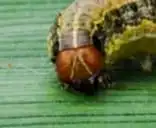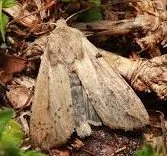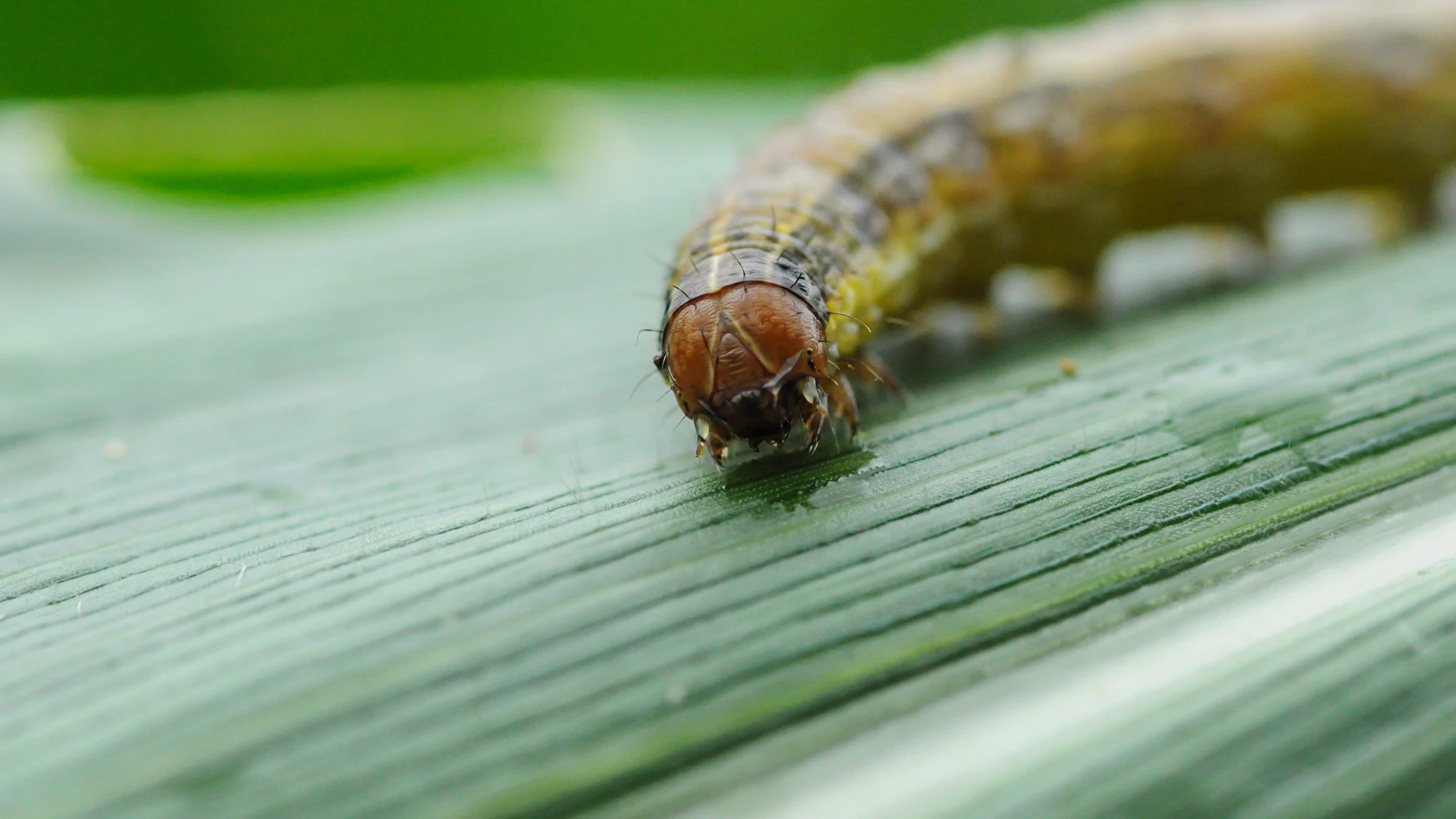What is an armyworm?
A fall armyworm, commonly referred to as just “armyworm,” takes on four forms during its four stages of life: egg, larvae, caterpillar, and moth. The first stage is a tiny white or light grey colored egg covered in fuzz. Eggs are laid on the underside of the leaves of host plants in bunches of fifty (50) or more. Common host plants include turfgrass, flowers, field crops, vegetables, and fruit plants. Egg bunches have also been found on fences, patios and other structures around your home. It takes the eggs about two to three weeks to hatch, and they all hatch about the same time.
The second stage of an armyworm is the larvae form. The larvae will be tiny green or black colored worms with a reddish-brown head. The larvae are commonly found on the underside of leaves. They become more active at night. As armyworm larvae grow, they become caterpillars, feeding in large numbers marching across a lawn or other plant foliage. You can recognize armyworm caterpillars by the Y shape on its head. As they feed on leaves of grass, the blades quickly turn into holey skeletons. Next, the turfgrass turns brown and flat, without vigor or bounce. Armyworms can devastate a lawn in just a few days. They seem to prefer Bermuda grass, but they also attack St. Augustine and Zoysia which are common turf grasses in North Texas.

The third stage of army worms’ life is the pupal stage. The larvae will burrow down to four (4) to six (6) inches and pupate for eleven (11) to thirteen (13) days. If cold weather is prolonged, the pupate cannot survive. Birds, rodents, and even skunks like to eat armyworm pupae.
In the fourth and final stage, the armyworm pupate becomes a small brownish tan month. An adult armyworm moth will live about ten (10) to twenty-one (21) days traveling with the wind. Female moths will lay eggs at night in bunches of fifty (50) to 1,000 eggs during that time. Then the armyworm lifecycle starts over again and repeats until the cold weather arrives.

When do Armyworms come out?
In North Texas, fall armyworms usually come out in late summer and early fall. There are populations of armyworms that winter in the far southern part of Texas in the pupal stage. Elsewhere in Texas, they die out in the cold winter months. Break-out years occur when there is a mild winter. Larger than normal populations of armyworms survive through the winter and head north. There have been break-outs as early as mid-April. Fall armyworms are permanent residents of Central and South America. In the moth stage, they fly and mate at night. It is common to see them fluttering around your porch light on a summer night. The female moth may lay as many as 1,000 eggs on host plants. Call Weedex Lawn Care about our preventative treatment for armyworms at (972) 727-9207.
How do I know if I have armyworms?
Several signs can alert you that you may have armyworms. If you see birds, paper wasps, or red wasps in your grass, then your lawn may be infested with armyworms. Birds and wasps will walk across the turfgrass, looking for larvae. Armyworms are most active in the early mornings and late evenings. Therefore, these are the best times to check for them in your yard. The larvae first appear on the tips of the grass blades, where they eat the cell tissue. When left unchecked, armyworms will strip the cell tissue from the leaves and leave the grass brown as they continue to move and forage on green grass. The damage to your grass can resemble drought stress but look for them in your grass early in the morning or late in the evening when they are most active. For proper identification and professional-grade services contact Weedex Lawn Care. We offer both preventative and curative treatments at (972) 727-9207.
How long do armyworms live?
Armyworms live about 4 to 6 weeks during their life cycle. They have four stages of life; eggs, larvae, worm, and month. It takes about three weeks for the armyworm to go from the egg stage to a full-grown larvae “armyworm” in the caterpillar image as we think of it. It will eat your grass during this larvae stage and then burrow into the ground, where the pupae will emerge as a month in two to three weeks. Then the cycle begins again until the cold weather kills them. If an outbreak happens in April, they could thrive until the freezing temperatures arrive in the fall.
How do you treat armyworms?
There are over-the-counter insect killer treatments available in granule or liquid form. This gives you the option of using a spreader with the granules or spraying the liquid form on the lawn. However, proper identification and professional-grade treatment services are available using a professional lawn treatment service like Weedex Lawn Care. (972) 727-9207
Are armyworms harmful to humans?
Armyworms are not harmful to humans, pets, or wildlife. However, they cause a lot of aggravation and expense when they decimate a lawn or athletic field. Keep a watchful eye on your lawn and if you suspect armyworms, call a professional. Weedex lawn care (972) 727-9207 Greener lawn. Happier you.



Comments (0)
Thanks for your comment!
Thanks for your feedback! Your comments have been successfully submitted! Please note, all comments require admin approval prior to display.
Error submitting comment!
There is a problem with your comment, please see below and try again.